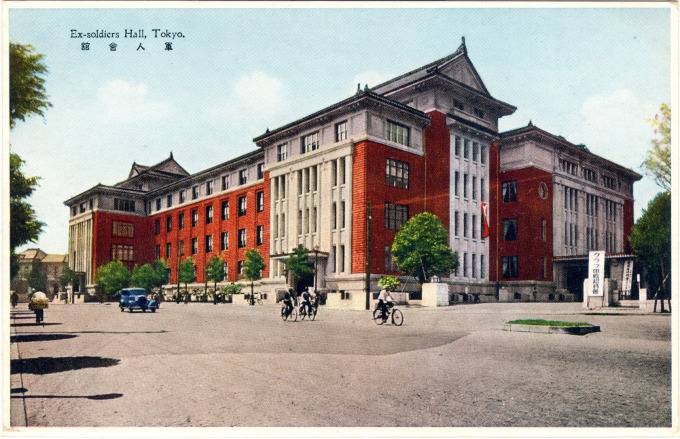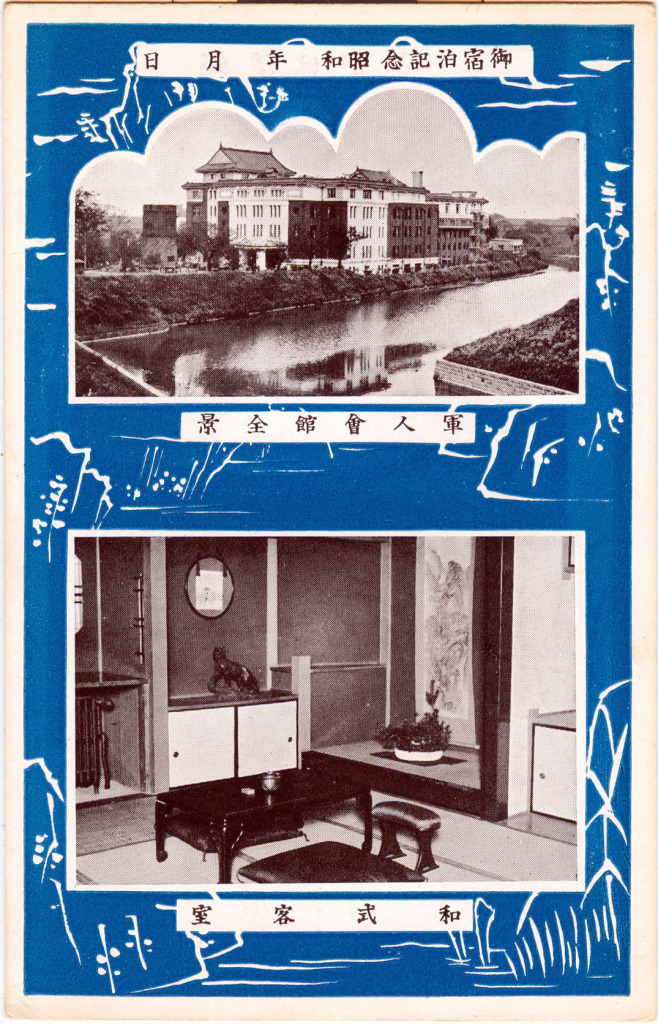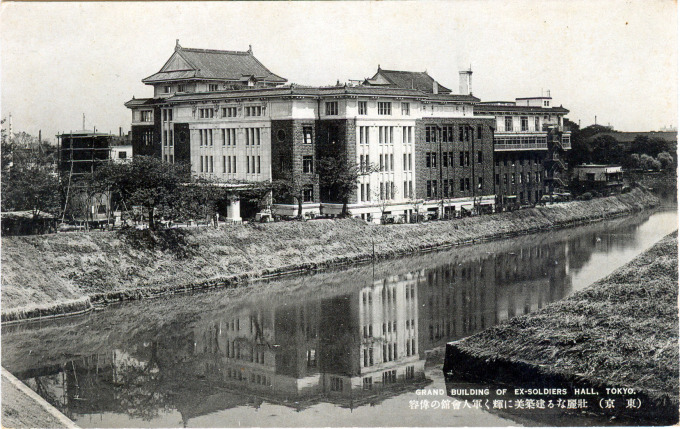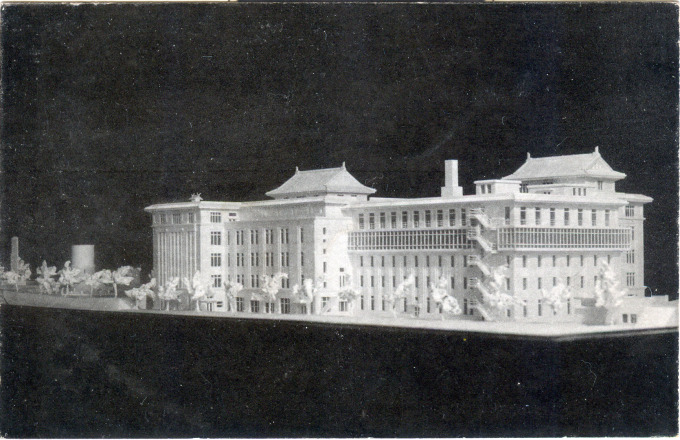See also:
Yasukuni Shrine at Kudan, Tokyo, c. 1910
Yushukan (Yushukwan), Kudan, c. 1910.
The Ex-Soldiers Hall [Gunjin kaikan] was built in 1934 near Yasukuni Shrine as a billet and training complex for Imperial Army reserve soldiers. The building also served as the Martial Law Headquarters during the so-called “February 26 Incident”, the failed putsch in 1936 by junior military officers of the IJA.
Gunjin Kaikan is an example of the Imperial Crown style of architecture, a reaction to Modernism in the early 1930s. The mounting nationalism of the first decade of Emperor Hirohito’s reign (1926-1989) required the Western materials of steel and concrete be crowned by something native.
After World War II and the Occupation, in 1953, it was renamed Kudan Kaikan and loaned free of charge to the Japanese Association for the Bereaved Families of War Dead, who reopened the facility as a hotel and banquet/wedding hall.
- Gunjin Kaikan, Kudan, Tokyo, c. 1935.
- Model of the Gunjin Kaikan, Kudan, Tokyo, c. 1935.






Pingback: Gunjin Kaikan, by Ryoichi Kawamoto, 1934 | cosmonauti a tokyo
Pingback: Yasukuni Shrine at Kudan, Tokyo, c. 1910 | Old Tokyo